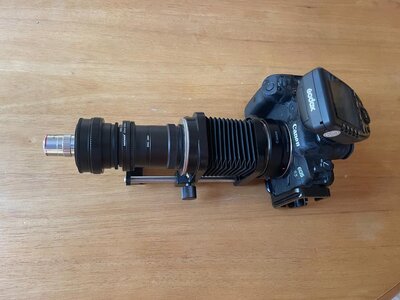Pro Member
- Joined
- Jul 7, 2022
- Posts
- 18
- Likes Received
- 63
- Name
- Ron Sill
I am new to macro. I usually do landscape and bird photography. A back injury has me pinned down at home for the most part so I started reading up on macro using extension tubes and microscope objectives. So I started ordering the parts I needed and assembled something I finally started getting to work. Here's my first attempt at using all the gear I've assembled together to do this. I've only got a manual rail for now. This shot was 148 slices in the end so I see a great benefit to buying an automated rail eventually. For now, this is a black ant I picked up recently.


